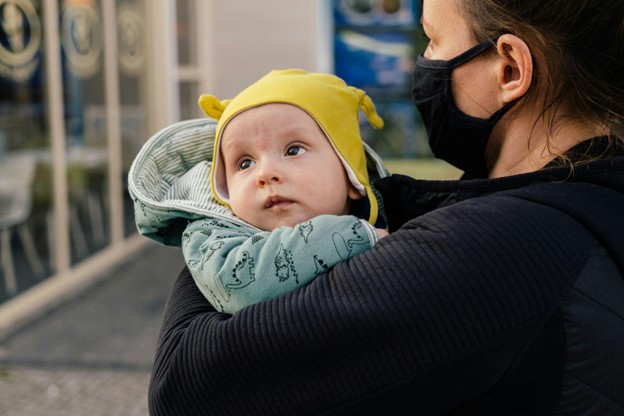Parenting, no matter how fulfilling, can sometimes feel overwhelming. Whether it’s figuring out how to discipline your child or helping them develop independence, many parents find themselves second-guessing their decisions. It’s easy to feel lost or unsure about what to do next.
That’s where online parenting classes come in. These courses provide expert guidance, structured advice, and practical strategies for everyday challenges. And perhaps most importantly, a significant confidence boost for navigating parenthood.
Why Confidence Matters in Parenting?
Parenting confidence isn’t just about feeling good; it’s about making better choices. When you feel sure of yourself, you’re more likely to handle difficult situations calmly and consistently. On the flip side, a lack of confidence can lead to hesitation, frustration, or even knee-jerk reactions that don’t help the situation.
Parenting classes give you the tools you need to face these challenges head-on. They’re designed to offer clear, practical advice based on research and years of experience, so instead of relying on guesswork, you can feel assured that you’re using tried-and-tested methods.
Real-World Guidance for Real-World Problems
One of the toughest parts of parenting is figuring out how to address everyday issues like tantrums, bedtime battles, or sibling fights. Many parents feel stuck, unsure of what to do next, and that uncertainty can breed frustration.
What sets online parenting classes apart is their ability to break down these common problems and offer structured, actionable guidance. Courses like those offered by Love and Logic are especially good at this. They focus on using natural consequences and empathy to help children learn responsibility in a way that doesn’t involve harsh punishment.

Imagine your child is refusing to do their homework. Instead of resorting to threats or bribes, you could apply a strategy you’ve learned from a course. For instance, you might calmly explain that they can finish their homework now and have extra free time later, or they can wait and lose screen time later. The structure is clear, the consequence makes sense, and you remain calm, knowing the outcome is in their hands.
Expert Advice, Anytime You Need It
One of the most appealing aspects of online parenting classes is the access to expert knowledge. Whether it’s a child psychologist, seasoned educator, or an experienced parent coach, these courses bring years of wisdom directly to you. No more sifting through countless blogs or trying to piece together bits of advice from various sources.
Take, for example, Love and Logic. This program has been fine-tuned over decades, combining the latest in behavioral research with time-tested methods. Instead of vague theories, you get solid, actionable advice that helps you understand why your child is behaving a certain way and what you can do to guide them.
This expert advice is incredibly empowering. Knowing that your approach is backed by research can drastically improve your confidence in your parenting choices. It’s easier to stay consistent when you trust the tools you’re using.
Practical Solutions for Busy Parents
The beauty of online parenting classes lies in their practicality. These aren’t abstract lessons filled with jargon or complicated theories. They’re designed to be used in the real world, offering you quick, effective strategies you can implement today.
Courses often include video examples, downloadable guides, and even community support through forums or group sessions. This practical help makes it easier to apply what you’re learning and adapt the strategies to your child’s specific needs.
For example, one parent shared how after attending an online class, they changed their approach to managing bedtime resistance. Rather than constant battles over going to bed, they learned a strategy that allowed their child to make the choice, with the understanding that staying up later would result in less playtime the next day. No more fighting—just natural consequences.

Building a Network of Support
Parenting can feel isolating at times, especially when you’re dealing with ongoing struggles like defiance, constant whining, or even more serious concerns like social anxiety. One of the often-overlooked benefits of online parenting classes is the sense of community they provide.
Many courses offer forums or live group sessions where you can connect with other parents who are facing the same issues. Knowing that you’re not alone can be a huge relief, and hearing how other parents have successfully navigated similar situations can give you fresh ideas to try at home.
Flexibility for Today’s Busy Life
Parenting is a full-time job, and between working, running a household, and looking after your kids, finding time to attend a class in person can feel impossible. That’s why Parenting Classes Online are so valuable—they fit into your schedule, not the other way around.
You can learn at your own pace, during nap times, after the kids have gone to bed, or even while you’re waiting at soccer practice. This flexibility allows you to continuously improve your parenting skills without disrupting your busy life.
Conclusion: Empower Yourself Through Learning
Parenting will never be easy, but it doesn’t have to feel like a constant uphill battle. With the right support and guidance, you can face each challenge with more confidence and less stress. Online parenting classes, such as those offered by Love and Logic, give you the tools and strategies you need to not only manage difficult situations but to do so with a sense of calm and assurance.
If you could feel more confident in your parenting approach, how would that change your day-to-day life with your children?
Frequently Asked Questions
1. What benefits do online parenting classes offer?
Online parenting classes provide practical, expert-backed solutions that are easy to implement. They offer flexibility, helping parents gain confidence in managing everyday parenting challenges.
2. How do online parenting classes help with discipline?
These classes focus on using natural consequences, consistency, and empathy to teach children responsibility. Programs like Love and Logic offer specific strategies that avoid yelling or harsh punishments.
3. Are online parenting classes suitable for all parents?
Absolutely. Whether you’re a new parent or have several kids, these classes offer valuable insights and advice that can be tailored to your family’s needs.
4. How do online parenting classes create a supportive environment?
Many courses include forums or group sessions where parents can connect, share stories, and learn from each other’s experiences, creating a strong sense of community.
5. How do online classes fit into a busy parent’s schedule?
Online classes are designed to be flexible. You can access them whenever it suits you, making it easier to fit learning into your daily routine.











